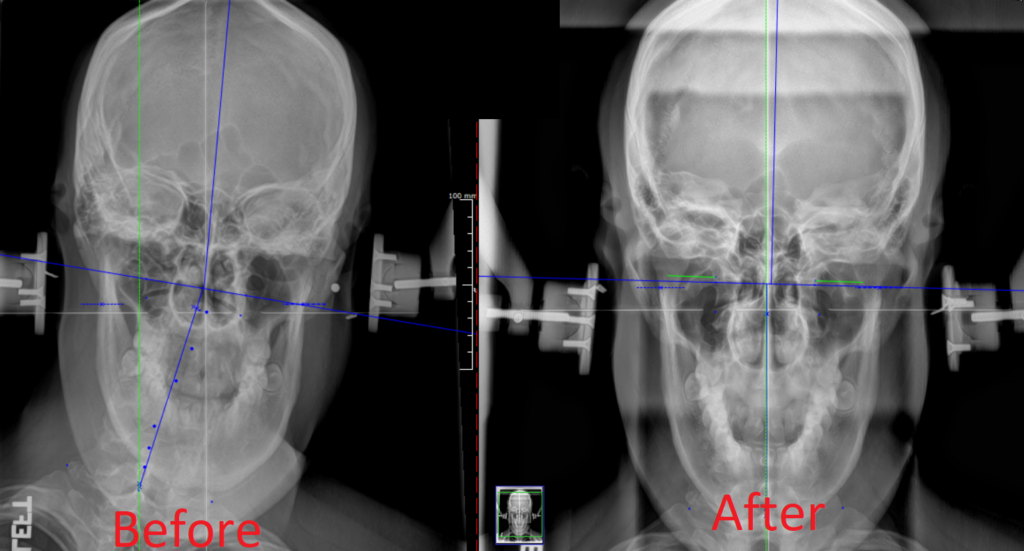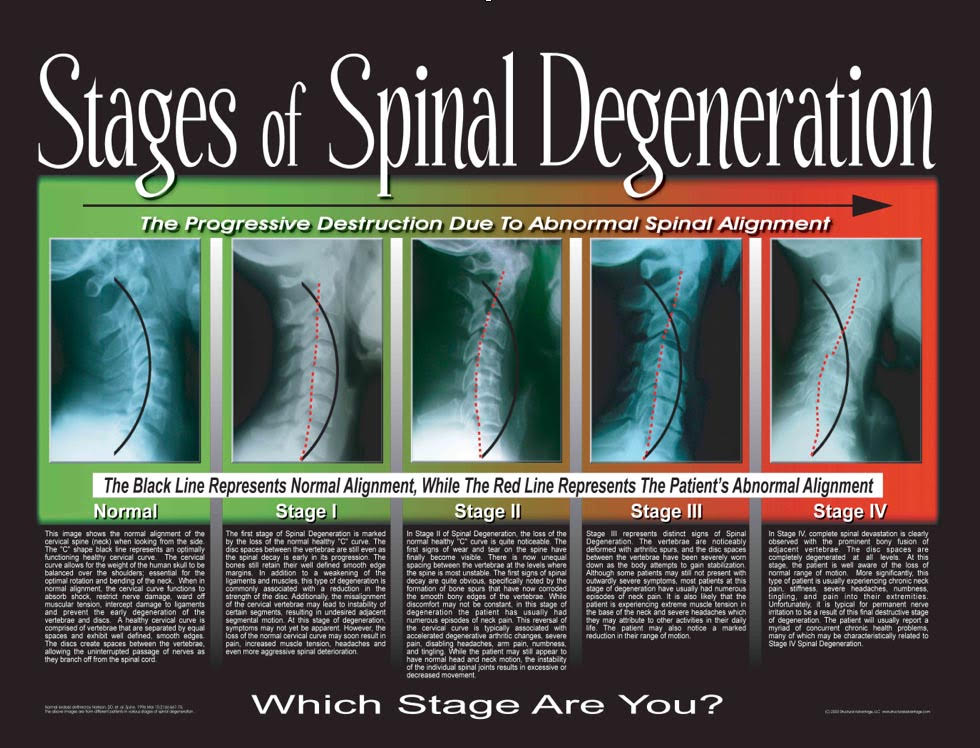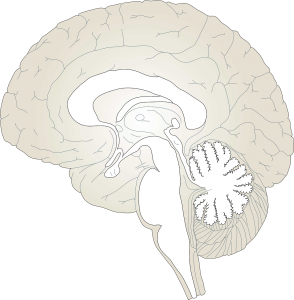
Discover the Benefits of
NUCCA Care
Traditional Chiropractic
Most chiropractors follow traditional chiropractic methods. They focus on reducing pain, decreasing muscle spasms, and increasing range of motion of joints. These chiropractors use forceful and rapid adjustments of the neck and spine and may even use temperature and traction therapies to aid in reaching their goals. Determining where to apply the thrust is mostly determined by if the bone feels like it is stuck. This is what most people have experienced if they have sought out chiropractic care previously. I believe most chiropractors are very good at what they do, providing pain relief and managing symptoms.
Atlas Correction
At Atlas Spinal Care, we focus on the correction of the Atlas to restore the structure of the entire spine. There is no twisting or popping of the neck; instead, we use a precise and gentle pressure to the area of the neck just below the ear. This is at the location of the Atlas, which is the top bone in your neck. We do not use subjective measurements like feel or touch to determine where and how to provide the correction. Our corrections are based off precise measurements down to a 1/4 of a degree and we use mathematical calculations to determine how to correct the entire spine. Once the correction is made, we take post measurements to ensure the correction is accomplished. We do not call it an adjustment, because we are not moving joints; we are restoring them back to their correct position. Our goal is to correct the issue in the least number of visits possible, then to monitor the correction over a period of time.


Atlas Misalignment
The Atlas is the top bone of the neck. It has the job of balancing the skull on top of the rest of the spine, as well as providing most of the movement for your head and neck. When an area of the body has a large amount of mobility, it also becomes very susceptible to injury (think of similar areas of the body like shoulders, wrists, and ankles). The Atlas misalignment causes the entire spine to misalign as a unit.
How does this happen? When an injury occurs to the Atlas, it tears apart the ligaments and connective tissue that holds the skull balanced over the rest of the spine. An Atlas misalignment occurs and the skull shifts off center. The skull weighs roughly 10-15 pounds in the average adult. In effort to keep the skull held upright, the rest of the spine misaligns to compensate for the shift in weight. When the entire spine misaligns in response to the Atlas shift, it does so in a certain pattern. The neck sits off to the side, the shoulders become uneven, the body twists, the hips become uneven, the pelvis may shift to one side, the legs become uneven, and the body leans overall to one direction. This pattern causes muscle imbalances, abnormal body movement, and a progressive degenerate condition due to two different types of stress. The first type of stress is structural stress, caused by the spine misalignment. The second stress is a neurological stress, caused by pressure being placed on the brainstem. These stresses will remain in the body until the Atlas is corrected. Once the correction is made, the pressure comes off the brainstem and the body restores normal alignment, thus removing the structural and neurological stress
Structural Stress
Structural stress is a result of the body compensating for the Atlas misalignment. When talking about structural stress, we use the analogy of a bowling ball sitting on top of a stick. If the bowling ball is perfectly balanced on top of the stick, it would involve little to no effort for you to hold the stick and ball upright. Now if we take the bowling ball and move it so it is no longer balanced on the stick, all of a sudden you would need to move the stick around to compensate for the change in weight. With the new position of the ball and stick, it would require more effort from you to hold everything up. If you had to hold it for a minute you could, but your muscles would get tired. Now what if you had to hold it there for 5 minutes; an hour, a week, a month, a year?
This is the same thing that happens in the human body. If the skull is perfectly balanced on top of the Atlas, the body can stay in a straight, upright, and relaxed position, involving little to no effort from your muscles, joints, and ligaments. When the Atlas is misaligned and the skull shifts off center, the entire body compensates and all your muscles, joints, and ligaments enter a stressed state. This stressed state causes muscle, joint, and ligament pain and degeneration.

Neurological Stress
The Atlas is the top bone of your neck. One of its many functions of this upper bone is to protect the brainstem and spinal cord. The Atlas is a ring-like bone and inside of that ring is where the brainstem and spinal cord sit. The brainstem has over 100 billion neurons, which pass through the center of the Atlas. When the Atlas misaligns, pressure is placed on these neurons and leads to a large amount of neurological stress on the brainstem and thus the entire body.
The Function of the Brainstem
The brainstem is one of the most vital portions of your entire nervous system. While it holds many important functions such as breathing, swallowing, heart rate, blood pressure, and consciousness, the most important function is controlling the messages between the brain and the rest of the body.
The brainstem functions as the conductor of your body. Like in an orchestra, when the conductor is performing well, the music is rhythmic and sounds perfect. If the conductor falls behind or goes too quickly, the music loses rhythm and becomes unappealing. Although this out-of-sync orchestra is able to keep playing, the music just does not sound right. The same is true with your body. If the brainstem loses the ability to function correctly, the body may still keep functioning but not as well as it could if the neurological stress were not present.

Signs of Neurological Stress
While there are plenty of signs showing neurological stress on the body, these signs are often overlooked until they become a serious problem. Many people experience problems like headaches, vertigo, breathing issues, digestive issues, reproductive issues, urinary issues, or sleeping issues. Unfortunately, many people think those things are common problems that they just need to live with, when in fact, most of these issues are linked to neurological stress on the body.
Some conditions seen related to Neurologic stress include:
Cervicogenic Headache
Cervicogenic Dizziness
Multiple Sclerosis
Schedule a Consult
Where a Consultation is a Conversation, Not a Commitment
The first step is to call Atlas Spinal Care to schedule your complimentary consultation with Dr. Tyler Malueg. The consultation is simply a discussion with Dr. Tyler. There will be no pressure to sign up for care. The purpose of the consult is to see if our office is a good fit for your needs. Dr. Tyler will also educate on how we are different from traditional chiropractic, how our process works, and answer any questions you may have. If you decide you would like to proceed with care you can schedule your examination at any time after your consult. The consult will cover a lot of great information and we often hear things like “I wish I brought my spouse/sister/parent along to hear this”. That is why we encourage you to bring along a family member or friend to your consult as a second set of ears and eyes. We look forward to meeting you.
To schedule a complimentary consultation, call 920-241-6808 or click below to schedule online.
